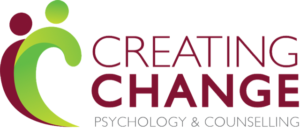
Parenting is a beautiful and challenging journey, and it comes with a unique set of joys and struggles. Every child is unique, and sometimes, parents may find themselves saying, “He’s such a difficult child.” This statement can be a signpost for parents to explore the possibility that their child may be on the autism spectrum.
As parents, we strive to provide the best care and support for our children, and sometimes, we may find ourselves wondering if our child’s behavior or development is typical or if there’s something more to it. If you’ve ever asked yourself, “Is my child on the autism spectrum?” you are not alone.
First and foremost, it’s essential to acknowledge that every child is unique. They have their own pace of development, interests, and quirks. However, it’s completely natural to have concerns about your child’s development, especially if you’ve noticed certain signs or behaviors that stand out.
Children with autism
- Do not respond to their name
- Might struggle with making eye contact
- May have delayed speech development and have difficulty in understanding non-verbal communication / body language
- May engage in repetitive actions, like hand-flapping, rocking, or fixating on specific interests
- May be sensitive to lights, sounds, textures, or tastes
- Often thrive routine and may become upset when their daily schedule is disrupted
If you suspect that your child may be on the autism spectrum, the first and most crucial step is to seek professional guidance. Consult a pediatrician or a child psychologist who can conduct a thorough evaluation to determine whether your child has autism. Studies indicate that early intervention can have a significant positive impact on a child’s future quality of life, especially in areas like academics and relationships.
Prevalence of Autism
The occurrence of Autism Spectrum Disorder (ASD) exhibited variations across different age groups, with a prevalence of 0.6% at age 3, which increased to 1.1% by age 6, 1.2% by age 9, and 1.3% by age 12. Notably, the prevalence was consistently higher in males compared to females, with 1.6% of boys affected at age 6, in contrast to only 0.5% of girls at the same age. This difference in prevalence between genders was consistently observed across all age groups and was approximately 3 to 4 times higher among male children.
What to Do If You Think Your Child Has Autism
- Seek professional guidance to provide your child with a proper diagnosis. Early intervention is key to helping them reach their full potential.
- A comprehensive testing assessment will provide clarification of diagnosis as well as clear recommendations for school and home.
- Educate yourself by learning about autism. Understanding your child’s condition will help you better adapt and provide effective support.
- Make sure to practice effective communication strategies that suit your child’s needs. This could include speech therapy, use of pictures, sign language, or the use of communication devices.
- Provide them with a loving and supportive environment in which they can thrive.
- Connect with local and online support groups for parents of children with autism. These communities provide a platform to share experiences, gather advice, and offer emotional support. Sharing experiences can help you navigate the challenges more effectively and reduce feelings of isolation.
Every child with autism is unique, and what works best for one child may not be the same for another. You are not alone, and there is a vast network of resources and professionals available to assist you in providing the best possible care for your child.
Written by Rebecca Deane – Clinical Psychologist – creatingchange.net.au

